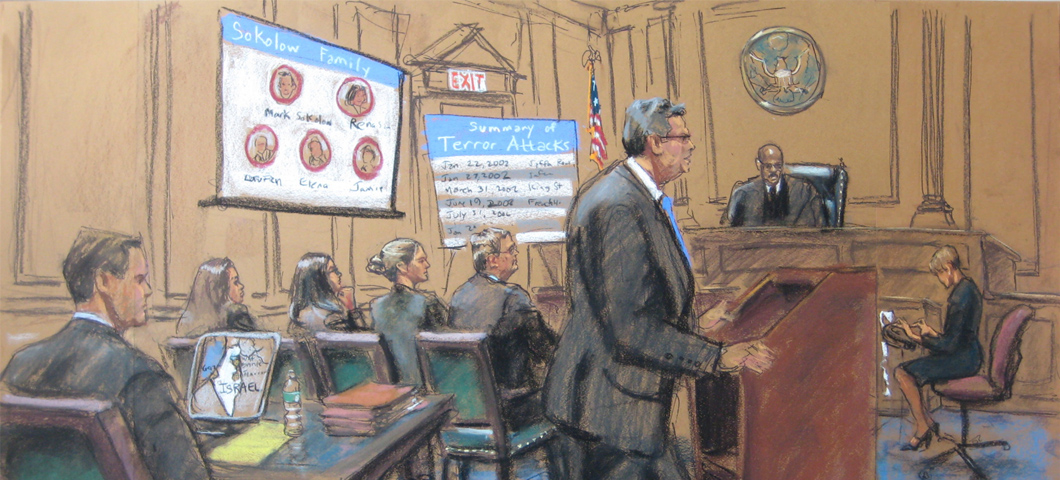Trial Presentation Clarifying Detailed Evidence for Courtroom Understanding
Trial Presentation Clarifying Detailed Evidence for Courtroom Understanding
Blog Article
Astound the Jury: Important Aspects of a Powerful Trial Presentation
Important components such as understanding the target market, crafting a compelling story, and mastering spoken and non-verbal communication are critical components of a reliable presentation. As these aspects link, they form a natural strategy that not only notifies yet likewise involves jurors on several levels.

Comprehending Your Target Market
Understanding your audience is a critical facet of effective trial presentation. A successful presentation rests on the capacity to grasp the demographics, values, and predispositions of jurors. This comprehension notifies just how arguments are mounted, proof is presented, and emotional charms are crafted, making sure that the message reverberates with the jurors on a personal level.
Research indicates that jurors come from varied histories and may have varying degrees of recognizing relating to legal proceedings. In addition, comprehending the jurors' potential prejudices and life experiences permits the trial speaker to prepare for objections and address concerns proactively.
Reliable test discussion likewise entails observing jurors' responses during the procedures. Being attuned to non-verbal hints can offer insight right into their involvement and receptivity, enabling real-time adjustments in method. Inevitably, a profound understanding of the target market not only improves communication but likewise builds relationship, enhancing the chance of a positive end result. Engaging with jurors as individuals instead than a cumulative system is vital in fostering a solid connection in the court room.

Crafting a Compelling Story
Crafting an engaging story is important in guiding jurors with the complexities of an instance. A well-structured narrative not just simplifies detailed legal principles but additionally engages jurors on an emotional degree, making the information more relatable and remarkable.
This message needs to resonate with the jurors' values and experiences, cultivating a link that transcends simple realities. This chronological method can aid jurors adhere to the progression of events, stressing reason and effect.
Integrating human components-- such as individual stories or narratives-- can further enhance the narrative's effect. These aspects stimulate empathy, enabling jurors to visualize the repercussions of the case on genuine lives. In addition, using a constant style throughout the discussion enhances the main argument, making it much easier for jurors to preserve crucial points.
Eventually, an engaging story changes a test discussion from a plain recitation of facts into an influential story that captivates the jury, motivating them to deliberate with both reason and emotion.
Making Use Of Visual Aids
Incorporating visual aids into a test discussion can substantially improve jurors' comprehension and retention of information. Visual products such as charts, diagrams, pictures, and video clips can change intricate legal concepts and evidence right into easily digestible formats. By involving numerous detects, these aids permit jurors to picture the situation's essential elements, making it much easier for them to follow along and grasp detailed information.
Furthermore, properly designed aesthetic aids can emphasize important points and emphasize connections between various items of evidence. As an example, timelines can efficiently highlight the series of occasions, while annotated images can clear up specific information pertinent to the situation. This not just help in understanding however likewise reinforces the narrative offered by the attorney.
It is vital, nonetheless, to ensure that visual help are relevant, clear, and expertly offered. Extremely complex or cluttered visuals might overwhelm jurors and interfere with the message. When made use of carefully, visual aids offer to match the oral disagreements and enhance the total influence of the test presentation. Inevitably, effective visual communication can be a powerful tool in convincing jurors and aiding them reach notified final thoughts.
Mastering Verbal Interaction
Efficient verbal communication is critical in a trial presentation, as it serves as the primary ways with which attorneys convey their debates and connect with jurors. Simplicity in language promotes understanding and helps jurors comprehend complex issues provided during the trial.
Moreover, tone and pacing considerably effect just how messages are received. A confident tone conveys authority, while appropriate his response pacing permits jurors to soak up info without really feeling overwhelmed. Attorneys ought to additionally differ their vocal inflections to emphasize key points and maintain jurors' interest throughout the presentation.
In addition, the company of spoken debates is crucial. Structuring the narrative realistically and coherently assists jurors comply with the attorney's line of thinking, making it easier for them to maintain critical details. Making use of influential strategies, such as storytelling, can my company also enhance the emotional resonance of the debates offered, therefore creating a much more profound link with jurors.
Ultimately, grasping verbal interaction not only reinforces a lawyer's situation yet also fosters trust fund and connection with the jury, dramatically enhancing the opportunities of a desirable decision.

Engaging With Body Movement
Nonverbal interaction plays an important role in trial discussions, commonly conveying messages that words alone can not share. Body language, incorporating gestures, stance, face expressions, and eye contact, considerably influences just how jurors perceive the credibility and genuineness of the presenter. A positive position, with shoulders back and an open position, can impart count on, while closed-off body movement may recommend defensiveness or uncertainty.

Face expressions need to show the feelings connected with the instance, reinforcing the story being presented. For example, a sincere expression during an emotional moment can evoke empathy and strengthen the emotional appeal. Ultimately, mastering body movement is necessary for effective test discussions, as it enhances verbal interaction and establishes an engaging visibility that resonates with the court.
Final Thought
To conclude, mesmerizing the court demands a tactical strategy that includes comprehending the audience, crafting a compelling story, making use of aesthetic aids, mastering verbal interaction, and involving through body movement. Each element plays a critical role in producing a powerful test discussion that reverberates with jurors on both psychological and intellectual degrees (trial presentation). By incorporating these parts effectively, lawyers can substantially boost their capacity to encourage and affect court decision-making
Report this page